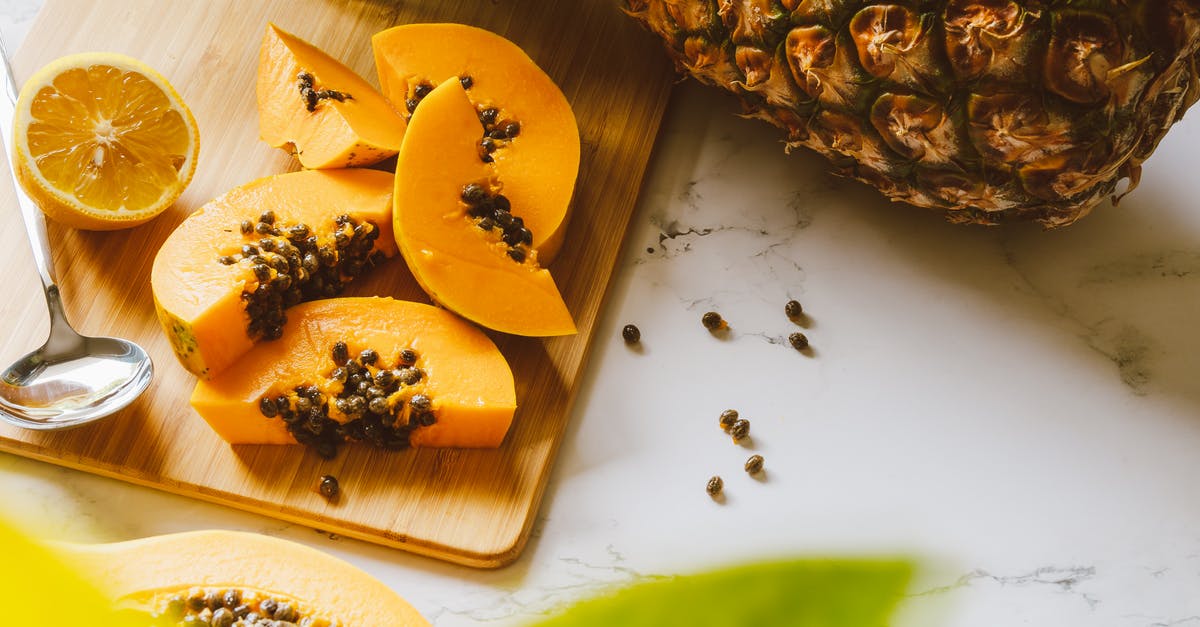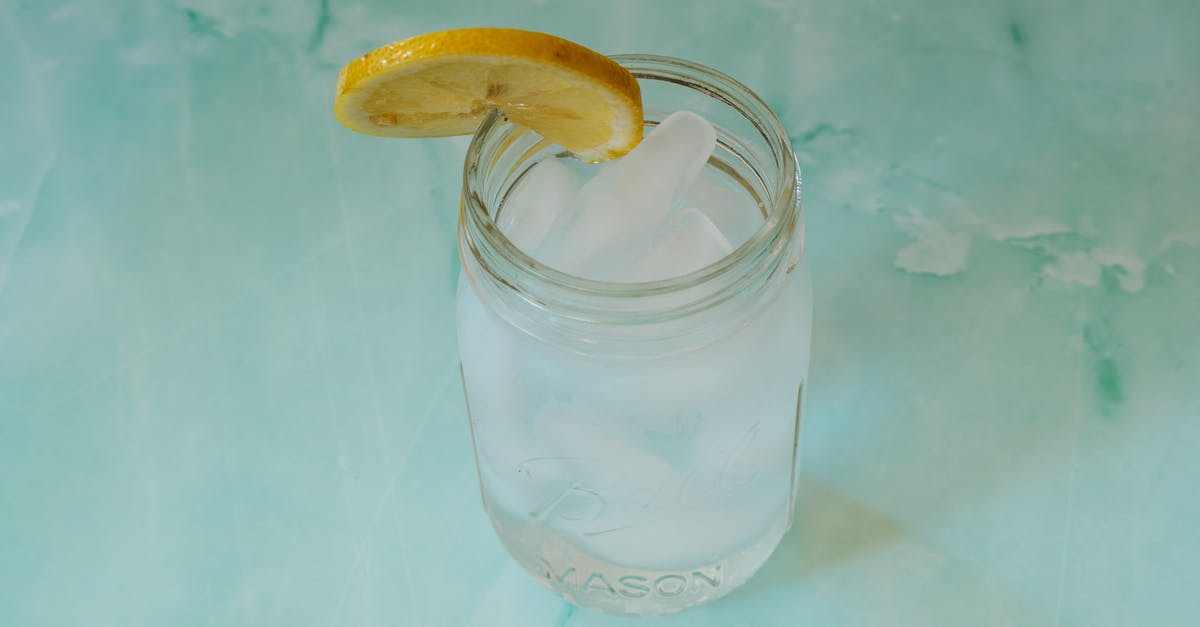Why does Béarnaise separate as opposed to crème brûlée or lemon curd?

When making creme brulees in the oven, they are heated to something like 100° C, or over. When making bernaise, heating it like that is a sure way of making it separate.
As far as I've understood, it is the vinegar and the fat that separates, when the protein in the egg coagulates, and of course there is no vinegar in either creme brulee or lemon curd, but the protein still coagulates. Still, the result is silky smooth.
Why is this? All I have are guesses, and some small amount of culinary science to shed some light on this would be greatly appreciated.
Best Answer
I think that there are a few different concepts being conflated here - let's try to clear those up before getting to the heart of the matter.
First of all, acidity causes just about any dairy product to curdle. That is precisely how cheese is made. Acidity, salt, and heat are all catalysts in the curdling process. This does not, however, affect clarified butter, because curdling is a result of the milk proteins coagulating and binding to each other, and true clarified butter is just the butterfat - there is no milk protein left. Based on that, we can conclude that vinegar is definitely not the important factor, which is further evidenced by the fact that lemon curd will also have a fairly high acidity due to the citric acid in lemon juice.
Crème brûlée is also not heated to 100° C, or even close to it. Dairy products burn very quickly when they approach that temperature. Many recipes for crème brûlée or crème caramel - and IMO virtually all of the good ones - will have you use a bain-marie (water bath) for the express purpose of temperature control. Since egg yolks begin to coagulate at 63° C (145° F), a crème brûlée doesn't need to be heated much higher, although there are many recommendations for the optimal temperature that seem to average around 75° C (around 170° F). If you try boil a crème brûlée, it will almost certainly burn and quite possibly curdle too.
For this reason, I believe that at least part of the difference is simply in your perception of the heat. Ovens heat much more slowly than stoves. Béarnaise (or the very similar Hollandaise) doesn't get heated all the way to 75° C, but it does get heated up to around the 63° C coagulation temperature of egg yolks, which really isn't that far off. You might see the surface of your crème-whatevers sizzle a bit, but that doesn't mean the entire pastries are at the liquid's boiling point; if they were, they'd be ruined.
The rest of the difference is sort of what Bruce's explanation is saying, although I think he's got it backwards, and the reported Julia Child ratio is way off (it should be 2 egg yolks per 3-4 oz of butter, which is only 90-120 mL). The amount of egg yolk (which acts as an emulsifier) relative to fat or dairy is important, but in order for the answer to really make sense, it's also important to understand why.
Egg yolks and butter-fat compose an emulsion of proteins and fat. The fats don't do anything special in response to heat, but the proteins coagulate, and in the process they will try to bind to each other; given a generous enough amount of egg yolk emulsified with butter, if you (a) heat up the yolks past the coagulation temperature and (b) don't keep them extremely well-dispersed, you'll end up with buttery scrambled eggs.
When making crème brûlée - or any custard - you want full coagulation of the egg yolks, because the relatively small amount of protein-packed yolks (typically, anywhere from 10% to 20% of the heavy cream by weight, which is only 4-8% of the fat by weight) is easily dispersed, and the individual molecules can't get close enough to each other to coalesce; instead they form a semi-firm but sparse network around the fat, much like what a meringue does around air.
On the other hand, Béarnaise and Hollandaise are supposed to be sauces. You're trying to thicken but not coagulate the eggs - in other words, allow a very weak protein network to form. To make this partial coagulation have any noticeable effect on the sauce's consistency, you need (relatively speaking) substantially more protein - closer to 30% of the fat. This higher concentration of protein puts the protein molecules in much closer proximity; without constant dispersion (in the form of whisking) and low, slow heat, the proteins will quickly start to coagulate and coalesce, because there's nothing stopping the attraction. This causes flocculation or even outright coalescence of the emulsion, which is the point at which you get that nasty scrambled-egg consistency.
It's got nothing to do with fat:water and everything to do with protein:fat. Fat helps prevent the coagulation of proteins; this principle is applied everywhere including baking, where oil or butter is used to slow down gluten development from flour (not eggs) and keep baked goods from becoming tough and rubbery. The ingredients and cooking method are different in a custard, but the principle is the same.
Protein is the main character in egg-based sauces and in scrambled eggs; the main difference between the two (with custards being somewhere in between) is how much protein, how well dispersed it is, and how much it is allowed to coagulate. Sauces have more protein, less coagulation; custards have less protein with full coagulation.
The difference is not huge, but it's enough to tip the scales if you're not careful.
Pictures about "Why does Béarnaise separate as opposed to crème brûlée or lemon curd?"



Why does my béarnaise split?
The mixture is rapidly whisked as one ingredient is added to the other, literally drop by drop to start. Whisking adds air and suspends tiny droplets of the liquid being added throughout the other liquid ingredient. Mistakes that result in a broken sauce: Trouble: Oil or butter floats on edge or puddles in sauce.What are the differences between sauce béarnaise and sauce hollandaise?
The difference is only in the flavoring: B\xe9arnaise uses shallot, chervil, peppercorns, and tarragon in a reduction of vinegar and wine, while Hollandaise is made of a reduction of lemon juice or white wine vinegar, with white peppercorns and a pinch of cayenne instead of the above seasonings.Why is it called béarnaise?
Chef Collinet is said to have titled his creation Sauce B\xe9arnaise in honor of B\xe9arn, the region of France in which Henri IV had been born. The Pavillon Henri IV is still in operation in the remnants of the Ch\xe2teau Neuf, now as part of a boutique hotel and meeting center.Is béarnaise sauce a derivative of hollandaise sauce?
B\xe9arnaise sauce is a derivative of Hollandaise sauce - one of the five mother sauces of the culinary world. It's made just like Hollandaise, but using a tarragon-shallot reduction instead of lemon juice.Why Does Hip Hop Hate Cardi B?
More answers regarding why does Béarnaise separate as opposed to crème brûlée or lemon curd?
Answer 2
Short answer -- the difference comes from the amount of emulsifiers, given the fat:water ratio in each recipe.
In Julia Child's classic Béarnaise, 250ml melted butter is whisked into 125ml vinegar-water mix and 2 yolks. This 2:1 volume ratio of fat in water stretches the emulsifying power of each yolk to keep the butter stable in the water phase, making it vulnerable to breaking upon heating.
Crème brûlée, meanwhile, uses a 2 yolks or more for each 250ml of heavy cream. Heavy cream in the US is 40% fat, which conveniently starts out emulsified, but even so, it is not even a 1:1 ratio. Therefore, even when all of the egg proteins cook in the crème brûlée, there is still plenty of emulsifying power left over to keep everything together.
For curd, there are lots of variations out there. Some use extra yolks, some add starch (e.g., cornstarch) to stabilize the emulsion, and some rely on very careful technique to keep the curd from breaking.
Sources: Stack Exchange - This article follows the attribution requirements of Stack Exchange and is licensed under CC BY-SA 3.0.
Images: Jess Loiterton, Jess Loiterton, Nana Lapushkina, Arina Krasnikova
